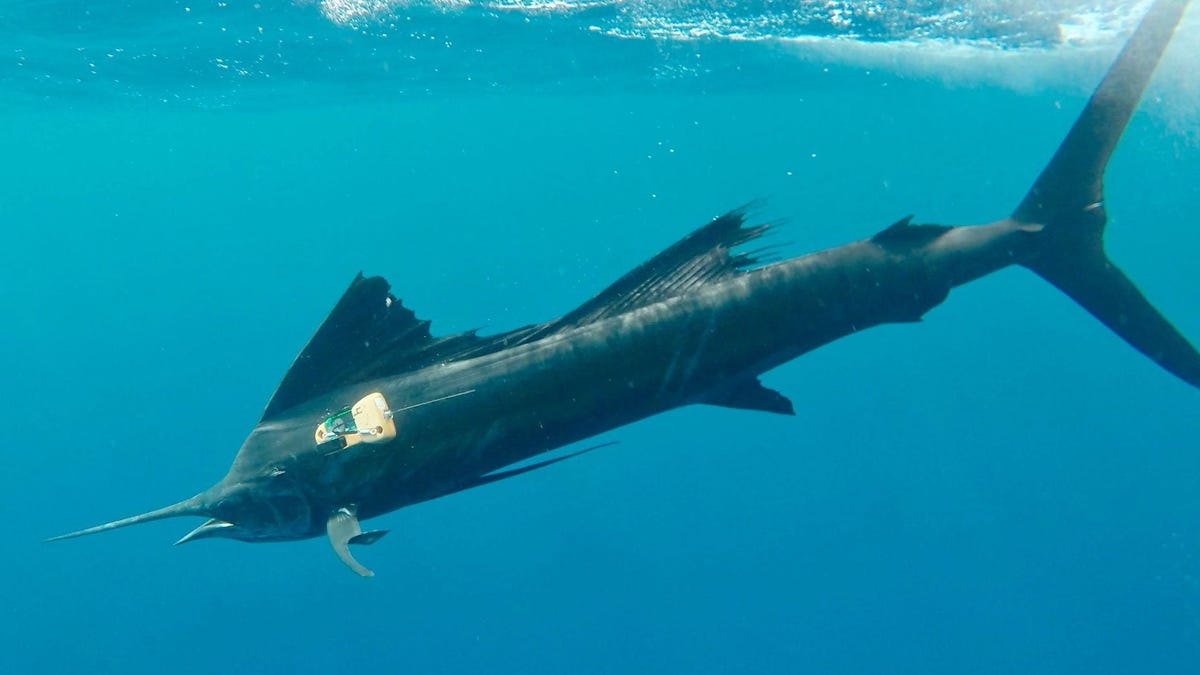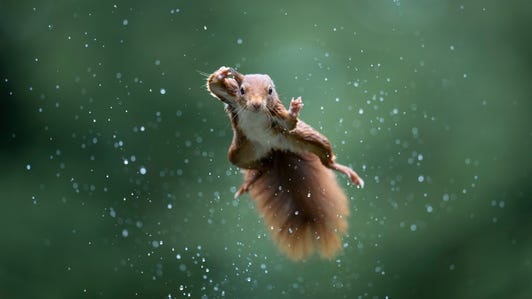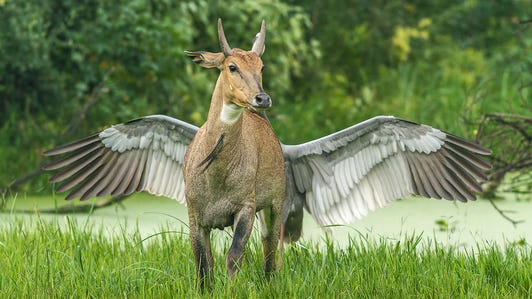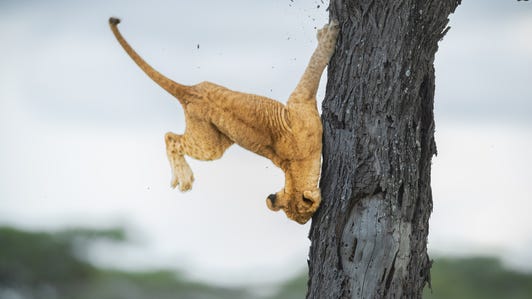
A sailfish sports a sensor and camera package on its side.
NSU Guy Harvey Research Institute
Sailfish don’t survive in captivity. These large, fast and mostly solitary fish live in the open ocean, which makes them hard to study. A team led by researchers at Nova Southeastern University in Florida has, for the first time, captured a sailfish’s view of its hunt for prey. Now scientists have an idea of just how much food a sailfish needs to eat every day.
Sailfish are often called the fastest fish in the world. According to the Australian Museum, the fish have been clocked swimming at more than 68 mph (110 kph). Sailfish sometimes engage in group hunting behavior near the ocean surface, where humans can more easily witness the activity. Much less is known about how they handle their food needs when alone.
NSU Guy Harvey Research Institute doctoral student Ryan Logan is the lead author of a paper on the sailfish’s hunting behavior published in the journal Scientific Reports late last month. Logan discusses the findings and shares footage of the hunt in a video released by NSU.
If you’re expecting a heart-pounding action-adventure film sequence, you won’t find it here. The clips show a lot of blue water and close-ups of the fish’s body. The NSU video highlights where a prey fish comes into view as the sailfish is in hot pursuit. The 100-pound (45-kilogram) sailfish made a quick ascension toward the surface and then conducted some acrobatic maneuvers in its efforts to catch a small tuna.
The insight into sailfish hunting behavior was an unexpected bonus. The research team designed a special electronic tag package with sensors and a camera to try to answer the question of how long it takes a sailfish to recover after being caught and released by a fisher. The sensor package comes off after a few days, but that was long enough to capture the thrill of the hunt and send the researchers in a new direction of study.
Based on data collected from the tag along with the video footage, the researchers estimated the sailfish each day needs about half a tuna like the one it was hunting to meet its energy demands.
Nature Goes Nuts in Delightful 2022 Comedy Wildlife Photo Awards Shots






+17 more
See all photos
Sailfish are a popular target for sport fishing. “This research improves our understanding of the hidden lives of these majestic, ecologically and economically very important fishes,” said study co-author Mahmood Shivji of NSU. “Such knowledge is essential to help us better protect the health of these fish and their prey to have a sustainable sportfish industry for many years to come.”
“The Secret Lives of Sailfish” sounds like it would make for a compelling documentary.
